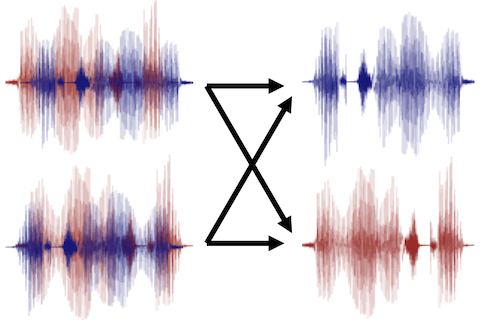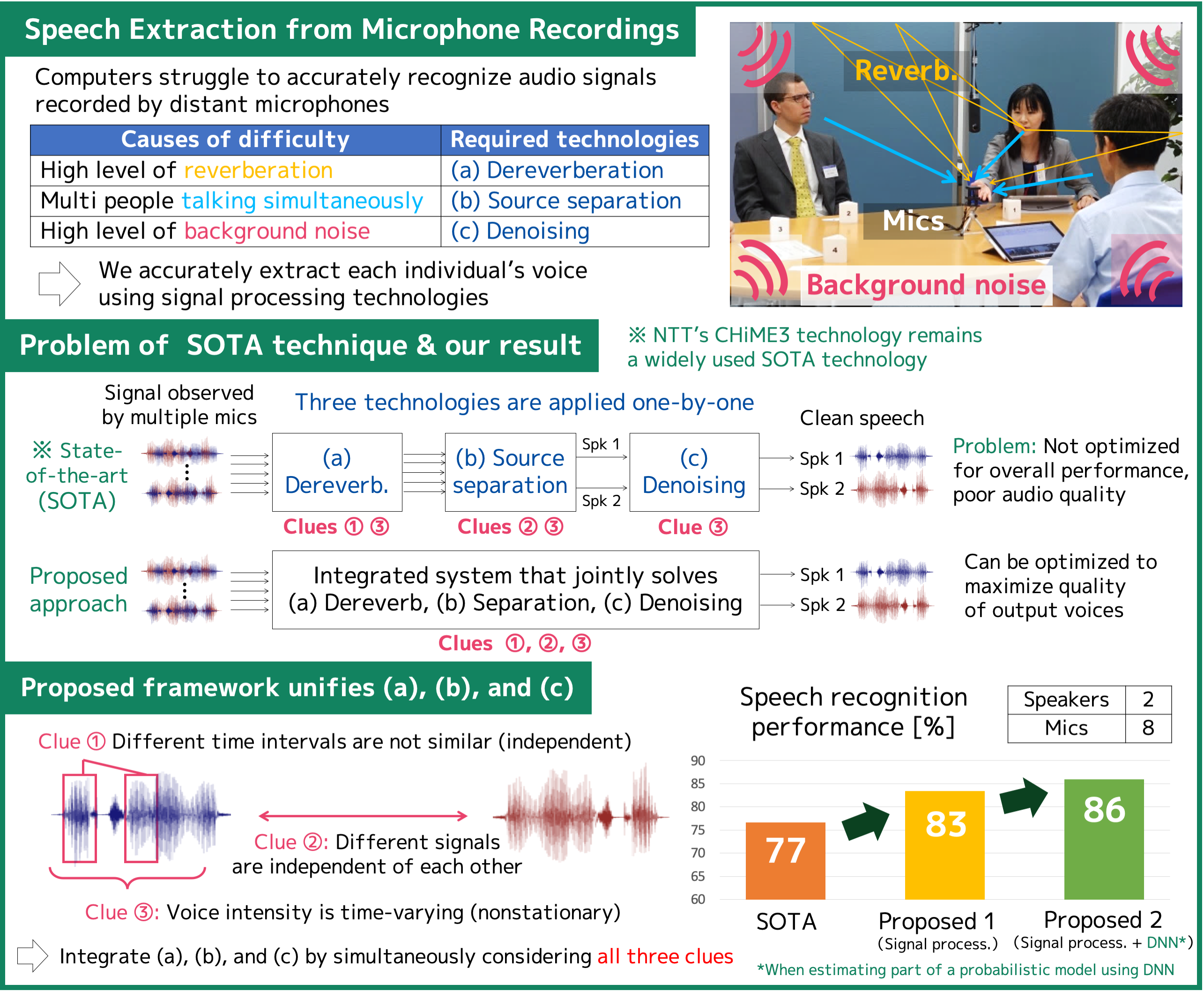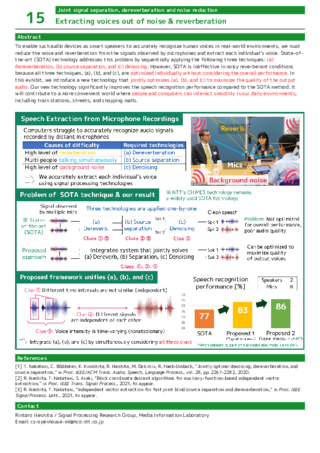| 15 |
Extracting voices out of noise & reverberationJoint signal separation, dereverberation and noise reduction 
|
|---|
To enable such audio devices as smart speakers to accurately recognize human voices in real-world environments, we must reduce the noise and reverberation from the signals observed by microphones and extract each individual’s voice. State-of-the-art (SOTA) technology addresses this problem by sequentially applying the following three techniques: (a) dereverberation, (b) source separation, and (c) denoising. However, SOTA is ineffective in noisy reverberant conditions because all three techniques, (a), (b), and (c), are optimized individually without considering the overall performance. In this exhibit, we introduce a new technology that jointly optimizes (a), (b), and (c) to maximize the quality of the output audio. Our new technology significantly improves the speech recognition performance compared to the SOTA method. It will contribute to a more convenient world where people and computers can interact smoothly in our daily environments, including train stations, streets, and shopping malls.

[1] T. Nakatani, C. Böddeker, K. Kinoshita, R. Ikeshita, M. Delcroix, R. Haeb-Umbach, “Jointly optimal denoising, dereverberation, and source separation,” in Proc. IEEE/ACM Trans. Audio, Speech, Language Process., vol. 28, pp. 2267-2282, 2020.
[2] R. Ikeshita, T. Nakatani, S. Araki, “Block coordinate descent algorithms for auxiliary-function-based independent vector extraction,” in Proc. IEEE Trans. Signal Process., 2021, to appear.
[3] R. Ikeshita, T. Nakatani, “Independent vector extraction for fast joint blind source separation and dereverberation,” in Proc. IEEE Signal Process. Lett., 2021, to appear.
Rintaro Ikeshita / Signal Processing Research Group, Media Information Laboratory
Email: cs-openhouse-ml@hco.ntt.co.jp


